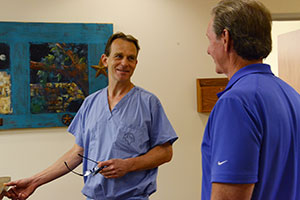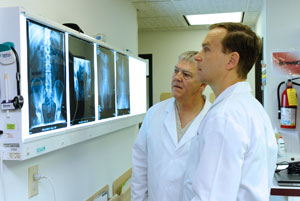Erec tile Dysfunction (Ed) or Impotence tile Dysfunction (Ed) or Impotence
To learn more about erectile dysfunction, select from the following list of topics.
Erectile Dysfunction Diagnostics
Erectile Dysfunction Causes 
Treatment for Erectile Dysfunction
Prevention of ED
More about Sexual Health
Erectile Dysfunction Overview How Does an Erection Occur? | Points to Remember | Resources for more information
Impotence is a consistent inability to sustain an erection sufficient for sexual intercourse. Medical professionals often use the term "erectile dysfunction" to describe this disorder and to differentiate it from other problems that interfere with sexual intercourse, such as lack of sexual desire and problems with ejaculation and orgasm. This fact sheet focuses on impotence defined as erectile dysfunction.
Impotence can be a total inability to achieve erection, an inconsistent ability to do so, or a tendency to sustain only brief erections. These variations make defining impotence and estimating its incidence difficult. Experts believe impotence affects between 10 and 15 million American men. In 1985, the National Ambulatory Medical Care Survey counted 525,000 doctor-office visits for erectile dysfunction.
Impotence usually has a physical cause, such as disease, injury, or drug side-effects. Any disorder that impairs blood flow through he penis has the potential to cause impotence. Incidence rises with age: about five percent of men at the age of 40 and between 15 and 25 percent of men at the age of 65 experience impotence. Yet, it is not an inevitable part of aging.
Impotence is treatable in all age groups, and awareness of this fact has been growing. More men have been seeking help and returning to near-normal sexual activity because of improved, successful treatments for impotence. Urologists, who specialize in problems of the urinary tract, have traditionally treated impotence--especially complications of impotence.
How Does an Erection Occur?
The penis contains two chambers, called the corpora cavernosa, which run the length of the organ.
A spongy tissue fills the chambers of the corpora cavernosa. The corpora cavernosa are surrounded by a membrane, called the tunica albuginea. The spongy tissue contains smooth muscles, fibrous tissues, spaces, veins, and arteries. The urethra, which is the channel for urine and ejaculate, runs along the underside of the corpora cavernosa.
An erection begins with sensory and mental stimulation. Impulses from the brain and local nerves cause the muscles of the penile arteries and the muscles of the spongy corpora cavernosa to relax, allowing blood to flow in and fill the open spaces in the spongy tissue. The blood creates pressure in the corpora cavernosa, making the penis expand. The tunica albuginea helps to trap the blood in the corpora cavernosa, thereby sustaining erection. The erection could be compared to the action of air in a bicycle tire. Air is forced into the inner tube under pressure. The inner tube (corpora cavernosa) presses against the outer tube (tunica albuginea) creating firmness. The blood is trapped in the corpora cavernosa sustaining the erection similar to the air trapped in the tire's inner tube.
An erection is reversed when muscles in the penis contract, stopping the inflow of blood and opening outflow channels and allowing the blood to return to the body's circulatory system.
If you are interested in a very technical description of the events, read the following.
With sexual stimulation, the parasympathetic nerves transmit impulses through the pelvic plexus to the arterioles of the corpora cavernosa, causing the release of nitric oxide. Nitric oxide activates an enzyme called guanylate cyclase which results in increased levels of cyclic guanosine monophosphate or cGMP. It is cGMP which causes the relaxation of the smooth muscles of the blood vessels in the corpora cavernosa. The increased arteriole inflow combined with an occlusion of the venous outflow by dilation of the spongy tissue of the corpora results in an erection. The erection is reversed when the cGMP is degraded or broken down by another enzyme called phosphdiesterase type 5 (PDE5). The smooth muscles contract, reducing the arterial inflow and allowed better venous drainage.
[Top]
Points to Remember
- Impotence is a consistent inability to sustain an erection sufficient for sexual intercourse.
- Impotence affects 10 to 15 million American men.
- Impotence usually has a physical cause.
- Impotence is treatable in all age groups.
- Treatments include psychotherapy, drug therapy, vacuum devices, and surgery.
Reprinted with permission from Dialogue Medical, dialogmedical.com.
Resources for More Information
Impotence Information Center
P.O. Box 9
Minneapolis, MN 55440
(800) 843-4315
Impotence Institute of America
8201 Corporate Drive
Suite 320
Landover, MD 20785
(301) 577-0650
Sexual Function Health Council
American Foundation for Urologic Disease
300 West Pratt Street
Suite 401
Baltimore, MD 21201
(800) 242-2383
The Geddings Osbon, Sr. Foundation
P.O. Drawer 1593
Augusta, GA 30903-1593
(800) 433-4215
This monograph uses parts of NIH Publication No. 95-3923, September 1995
[Top]
Quick navigation links:
What is a Urology Center | Urologist | Urology Conditions | Urology Services | Resources for Health | Contact Urology Center in North Texas | Sitemap | Home
Disclaimer:
The pictures displayed in www.TexasUrology.com are images of actual patients and employees who have consented to have their picture in this website.

Website Design & Educational Content © Copyright 2023 MedIngenuity, LLC
Medingenuity develops content-rich educational web sites for urologists and urology group practices.
|